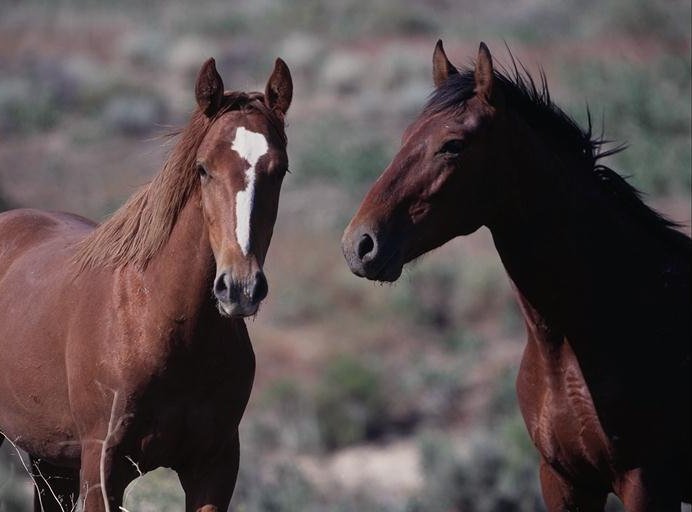| Principles for Success
|
The Secretary’s initiative is based on five underlying principles. Each serves to shape the nature of the challenge the BLM faces in trying to identify and implement a sustainable approach for the management of America’s wild horses and burros. A successful strategy will depend on the BLM’s ability to effectively integrate the five principles.
First, there is a need to control population size to keep the herds healthy and maintain a thriving natural ecological balance on the public lands. The current wild horse and burro population is estimated at over 38,000 animals on the range. Without natural controls such as predators or effective fertility control, populations can double every four to five years. Left unchecked, there could be close to 325,000 horses and burros on public lands by 2021 — a ten-fold increase — and more than 10 times the number the land can support.
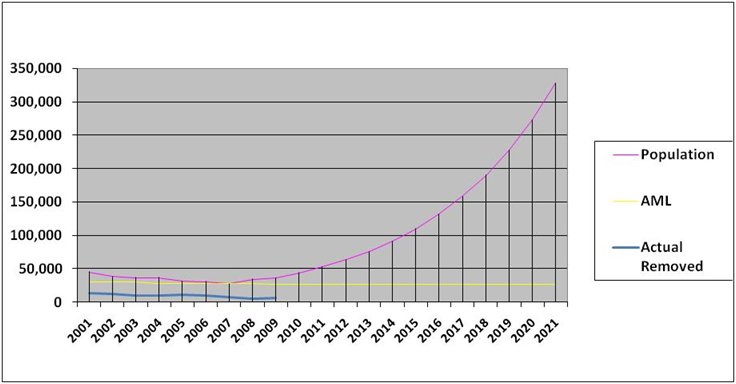 |
Wild horse and burro populations on public lands could be close to 325,000 by 2021 without gathers to remove excess animals, fertility control, or natural controls such as disease or predation.
Figure 3.1. Estimated Population on Public Lands Without Roundups and other Population Control Measures
Second, the number of horses and burros gathered each year needs to more closely match the number that can be placed in private care in order to reduce the cost of caring for unadopted animals. Each year, the BLM removes 5,000 to 10,000 animals in areas where population goals are exceeded in order to protect the range from overgrazing, allow burned areas to re-vegetate after wildfires, or where emergency drought conditions threaten the health of the herd.
While many captured horses and burros are placed in private care through the BLM’s adoption program, adoption rates have not kept pace with the number that need be removed to protect the environment. The costs to humanely care for these animals now make up a significant percentage of the program’s total cost — and the budget increases necessary to support these costs are not sustainable. Without a fundamental shift in how the program is managed, the number of animals the BLM is holding could grow to more than 80,000 and costs for their care could exceed $100 million in FY2021.
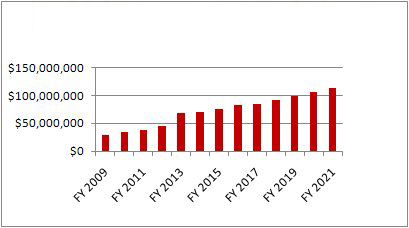
In less than a year at the current adoption rate, there will be more horses in holding than on the public rangelands.
Figure 3.2. Estimated Holding Costs Based on a Population of 37,000 and Adoptions of 3,500 Per year
If the BLM is able to reduce the number of horses that must be removed from the range — or to substantially increase the number of excess animals placed into private care — holding costs would be reduced and more funding would be available for application of fertility control or other population control measures, population inventory, monitoring, AML re-evaluation, and science and research.
The BLM expects to rely on long-term pastures or establish new preserves for surplus horses for the foreseeable future. In part, this is due to the average life expectancy of the 35,000 animals currently in holding (i.e., 30 years of age as compared to about 20 years on the range). A significant portion of the BLM’s appropriated budget will continue to be needed for their care.
Third, the number of excess animals which must be removed from the range is a direct function of the population and the extent to which fertility control or other population control measures are applied and effective. For example, for a population of about 15,000 breeding animals, only about 3,000 animals per year would need to be removed to maintain population size. There would be no need for fertility control, and at the current adoption rate, all of the animals would be adopted with none placed in long-term pastures.
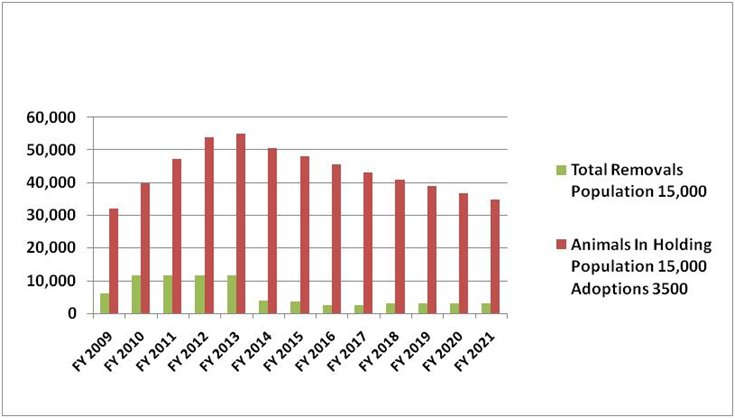 |
Over time, if the BLM is able to successfully control population growth, fewer horses and burros will need to be removed from the range. As a result, fewer animals will be placed in short- or long-term holding.
Figure 3.3. Numbers in Holding based on Adopting 3,500 and a Breeding Population of 15,000
Application of fertility control or implementation of other population control measures could also reduce the number of excess animals that need to be removed each year. For example, effective application of fertility control to a population of 26,000 breeding animals (the current AML) could reduce removal numbers to approximately 3,800 per year. Assuming the current adoption rate of about 3,500 animals per year remains steady and the effectiveness of Porcine Zona Pellucida (PZP) is as predicted, the number in holding could be stabilized. For this scenario to occur, thousands of mares would need to be gathered and treated with PZP every fourth year. Other methods of population control, such as adjusting the sex ratio of the herds to 60/40 males to females or establishing all male (sterilized) herds would also need to be implemented to begin to reduce the number of animals in holding.
Fourth, an increase in the number of excess horses placed in private care would reduce the number of horses in long-term pastures, and decrease the costs for their care over time. As an example, if the BLM were able to increase the number of excess animals placed in private care to about 7,000 animals per year, about 30,000 fewer horses would be in holding by 2021.
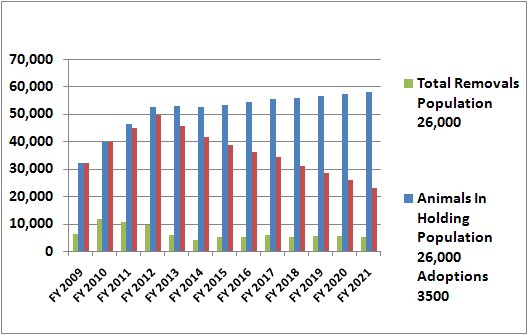 |
If adoptions could be increased and then maintained at about 7,000 animals per year, there would be thousands fewer unadopted horses in holding by 2021, and reduced costs for their care.
Figure 3.4. Projected Holding number Based on a Breeding population of 26,000 and Two Adoption Rates (7,000 and 3,5000 Per Year)
Fifth, sustainable solutions to the challenges of the BLM’s Wild Horse and Burro Program are possible only through partnerships. Wild horses and burros are America’s national treasures and the BLM needs to nourish existing partnerships with horse and burro interest groups, conservationists, and ranchers and expand our capacity to care for these animals through creative new partnerships with communities, state and local governments, local businesses and others who share an interest in sustaining these American icons.
